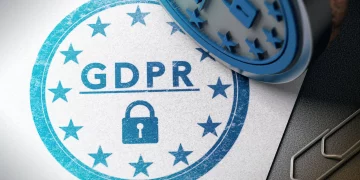As blockchain technology continues to reshape industries—from finance and logistics to healthcare and digital identity—it increasingly finds itself under the scrutiny of governments and regulatory bodies around the world. While blockchain was born as a borderless, decentralized innovation, the real-world deployment of blockchain solutions must navigate a complex web of national laws, compliance obligations, and policy uncertainties.
The global regulatory environment is not uniform, and the fragmentation of laws across borders poses one of the greatest obstacles to blockchain’s mainstream adoption. Understanding how blockchain systems address these challenges is critical for innovators, enterprises, and policymakers alike.
1. Fragmented Regulations: The Global Challenge
Each country or region approaches blockchain differently, resulting in a patchwork of inconsistent laws:
- United States: Multiple agencies regulate blockchain in overlapping ways. The SEC treats many tokens as securities, while the CFTC classifies them as commodities. The IRS sees them as property. Compliance is complex and often unclear.
- European Union: The EU is rolling out MiCA (Markets in Crypto-Assets Regulation) to standardize rules across member states, but full implementation remains underway.
- China: Cryptocurrency trading and mining are banned. Blockchain is supported only in permissioned, state-controlled formats.
- Singapore & UAE: These jurisdictions offer clear legal frameworks, regulatory sandboxes, and pro-innovation policies that attract startups and institutional projects.
- Africa & Latin America: Regulations are evolving rapidly, with some countries embracing blockchain to solve problems in banking, identity, and voting—while others remain regulatory gray zones.
This legal fragmentation creates serious hurdles for developers, businesses, and investors who operate globally or across digital borders.
2. Core Regulatory Concerns Impacting Blockchain
Blockchain applications must comply with a wide range of legal and regulatory domains, including:
A. Securities Law
Many tokens—especially those sold via ICOs, STOs, or IDOs—may be classified as securities in some jurisdictions, triggering strict disclosure, licensing, and investor protection requirements.
B. Anti-Money Laundering (AML) & Know-Your-Customer (KYC)
Governments want to ensure that blockchain platforms cannot be used for illicit finance. As a result, crypto exchanges, DeFi protocols, and wallet providers face increasing pressure to verify user identities and report suspicious activities.
C. Taxation
Tax authorities in many countries require crypto users to report capital gains, income from staking or mining, and business transactions. Lack of uniformity in reporting standards creates compliance burdens for individuals and companies alike.
D. Data Protection & Privacy
Public blockchains often conflict with data privacy regulations like GDPR in the EU or China’s Personal Information Protection Law (PIPL). Immutability can prevent data deletion, and decentralized networks often involve cross-border data processing.
3. How Blockchain Is Adapting to Regulatory Pressures
Despite the challenges, blockchain is not inherently incompatible with legal systems. In fact, it offers features that, if implemented properly, can enhance regulatory compliance and trust.
A. Compliance-by-Design
Modern blockchain projects increasingly build regulatory features into the protocol layer. This includes:
- Identity verification modules for KYC/AML compliance
- Permissioned access controls for enterprise or regulated environments
- On-chain audit logs that simplify reporting and oversight
By embedding compliance in code, systems can reduce reliance on intermediaries and streamline enforcement.
B. Geofencing and Jurisdictional Segmentation
Blockchain applications now often restrict access based on user location to comply with local laws. For example, some DeFi platforms block U.S. users due to SEC scrutiny, while others limit services in sanctioned countries.
Though this compromises decentralization to some degree, it helps projects avoid regulatory penalties.
C. Legal Wrappers for DAOs and Protocols
Decentralized Autonomous Organizations (DAOs) and token-based platforms are beginning to register legal entities—such as LLCs or foundations—to comply with national regulations, sign contracts, and manage tax obligations. Jurisdictions like Wyoming (USA) and Zug (Switzerland) have created legal frameworks specifically for blockchain-native organizations.
D. Adoption of Hybrid and Permissioned Chains
Enterprises and governments often prefer permissioned blockchains that provide privacy, access control, and integration with existing legal infrastructure. These models are more adaptable to traditional regulatory frameworks while maintaining some core blockchain benefits like traceability and immutability.
4. International Efforts Toward Harmonization
To reduce legal uncertainty and compliance complexity, global institutions are working toward standardizing blockchain regulations:
- FATF (Financial Action Task Force): Introduced the “Travel Rule” requiring crypto platforms to share sender and receiver information for transactions above a certain threshold.
- OECD: Developing a Crypto-Asset Reporting Framework to align tax reporting obligations internationally.
- EU’s MiCA Regulation: Provides a unified legal framework for crypto assets across 27 member states, covering stablecoins, utility tokens, and service providers.
- IMF and World Bank: Advocating for coordinated policies to manage the risks and opportunities of digital assets on a global scale.
These initiatives are promising but remain slow and uneven in implementation.

5. Challenges That Remain
Despite progress, blockchain still faces serious barriers due to regulatory fragmentation:
- Uncertain Definitions: What constitutes a “security,” “currency,” or “utility token” varies widely between jurisdictions.
- Enforcement Disparity: Some countries actively prosecute non-compliant blockchain firms, while others lack enforcement capacity or legal clarity.
- Burden on Developers: Startups must consult lawyers in multiple countries, adapt products to comply with conflicting laws, and may face retroactive enforcement.
- Innovation Flight: Excessively rigid or hostile legal environments may drive innovation offshore, reducing local competitiveness.
6. Strategic Path Forward for Blockchain Ecosystem
For blockchain to achieve global impact while remaining within legal frameworks, both the industry and regulators must evolve:
For Developers and Companies
- Build with compliance in mind from day one
- Choose jurisdictions with clear and favorable regulations
- Separate governance, technical infrastructure, and user interaction layers to minimize legal exposure
- Engage in public consultation processes with regulators
For Governments and Regulatory Bodies
- Offer regulatory sandboxes to support innovation under supervision
- Create clear definitions and token classifications
- Adopt technology-neutral laws that focus on function, not form
- Collaborate internationally to minimize compliance friction
Conclusion
Blockchain is a transformative technology, but its future depends on how well it can adapt to a world of diverse legal expectations. The tension between decentralization and regulation is not inherently destructive—if managed wisely, it can lead to more secure, transparent, and accountable systems.
To navigate the regulatory maze, blockchain must evolve—not by abandoning its principles, but by implementing flexible, legally aware systems that can operate responsibly within national and international frameworks. Only then can it truly scale across borders and industries.


















































